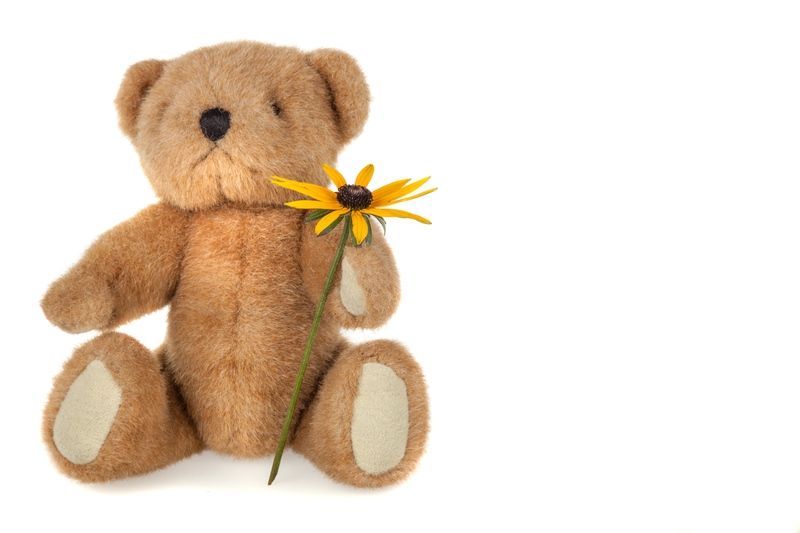The Future of Packaging and Cardboard Disposal in a Green World
As the world grows ever more eco-conscious, the impact of packaging waste -- especially cardboard -- has gained global attention. The surge in e-commerce and consumer goods packaging has propelled cardboard to the forefront of sustainability discussions. What lies ahead for packaging innovation and cardboard disposal methods in a green world? This comprehensive guide explores current sustainability efforts, emerging technologies, and best practices to revolutionize how we create and dispose of packaging materials.

Understanding the Current Landscape of Cardboard Packaging
Cardboard is widely favored for its versatility, low cost, recyclability, and generally reduced environmental footprint compared to plastics. However, the explosion of online shopping and shipping has created significant challenges in managing sustainable packaging waste. To envision the future of packaging and cardboard disposal in a green world, it's vital to assess today's landscape:
- Global e-commerce: The rise of e-retail has amplified packaging use, with cardboard boxes forming the backbone of delivery logistics.
- Waste generation: According to recent studies, cardboard constitutes a substantial portion of total solid waste in developed nations.
- Recycling rates: While cardboard is among the most recycled materials, contamination, inefficient collection, and transportation hurdles can hinder full circularity.
- Regulatory initiatives: Many governments have begun mandating recycling targets and promoting eco-friendly packaging materials.
The Environmental Impact of Cardboard Waste
Even though cardboard is biodegradable and recyclable, improper disposal or excessive use contributes to:
- Deforestation and unsustainable forestry practices
- Greenhouse gas emissions during production and decomposition
- Overflowing landfills when recycling is not accessible
- Energy consumption in manufacturing and recycling processes
Future packaging solutions must address these pressing concerns while meeting consumer demand and economic viability.
Sustainable Innovations Shaping the Future of Packaging
The future of green packaging relies on bold innovations in material science, waste management, and logistics. Here are notable trends transforming the packaging industry:
1. Bio-Based and Biodegradable Packaging Materials
- Plant-Based Cardboard: Packaging derived from agricultural waste or fast-growing, renewable crops is gaining popularity for its reduced carbon footprint.
- Biodegradable Coatings: Water, algae, or cornstarch-based coatings offer protective properties without impeding compostability or recyclability.
- Mycelium Packaging: Fungi-derived packaging presents a compostable, high-strength alternative to conventional cardboard and foam.
2. Smarter Cardboard Design and Engineering
- Right-Sizing: Automation and AI-driven tools customize box dimensions, minimizing material use and void fill waste.
- Efficient Structures: Innovations in box design (such as honeycomb patterns or reinforced fluting) enhance protection and reusability without extra material.
- Minimalist Labeling: Direct printing and environmentally safe inks reduce adhesive and contaminant use.
3. Digitalization and Trackable Packaging
Future-ready packaging will utilize digital technologies to enable smarter disposal and enhanced recycling, such as:
- QR Codes & SMART Labels: Consumers can scan packaging for easily accessible recycling information or track lifecycle journeys.
- RFID-Enabled Reuse Schemes: Companies can monitor packaging returns for cleaning and refilling, supporting closed-loop systems.
- AI in Waste Sorting: Artificial intelligence streamlines collection and sorting at recycling facilities, improving recovery rates.
Emerging Strategies for Cardboard Disposal in a Green World
While reducing cardboard use remains a core principle, smarter disposal options ensure that necessary packaging never becomes waste. Key practices and solutions include:
1. Advanced Recycling Processes
- Automated Sorting: Robotics and AI enhance accuracy, speed, and efficiency at recycling plants, resulting in purer cardboard streams.
- Localized Collection: Micro-recycling hubs reduce transportation emissions and process small batches more effectively.
- Deinking and Cleaning: New, less toxic solvents improve the quality of recycled cardboard, expanding its lifecycle options.
2. Compostable Cardboard Solutions
- Home Compostable Packaging: Certain cardboards, free from plastic coatings or heavy dyes, can break down in household compost bins, returning nutrients to the soil.
- Omni-Compatible Designs: Products designed to be safe for both recycling and composting maximize end-of-life flexibility.
3. Reuse and Closed-Loop Systems
- Returnable Shipping Boxes: Multipurpose packaging is sent back to retailers, sanitized, and reused, dramatically cutting down single-use waste.
- Modular Packaging: Designs that can be repurposed--for example, storage boxes or furniture--increase functional lifespan before disposal.
The Circular Economy: Integrating Cardboard into Sustainable Loops
At the heart of the future of packaging and cardboard waste management is a commitment to the circular economy. This model keeps resources cycling through production, use, recovery, and reuse, creating environmental and economic benefits:
- Reduced demand for virgin materials: By maximizing reuse and recycling, the need for fresh pulp and energy-intensive production falls.
- Lower carbon emissions: Shorter supply chains and less landfill waste translate to lower greenhouse gases.
- Job creation: The shift toward repair, reuse, and advanced recycling fosters new industries and green employment.
- Informed consumers: Clearer labeling, take-back programs, and platforms for conscious disposal promote responsible behavior.
Global Examples of Circular Cardboard Success
- Loop (UK & US): This service partners with brands to deliver groceries in reusable packaging, including durable cardboard, with a robust return logistics network.
- Germany's Dual System: The Green Dot ("Der Grune Punkt") requires manufacturers to manage the recycling or return of packaging, resulting in high cardboard recovery rates.
- Major Retailers: Companies like IKEA and Amazon invest heavily in recyclable and reusable cardboard to meet internal sustainability targets and customer expectations.
Consumer Role in Shaping the Future of Cardboard Packaging
Consumers are empowered more than ever to drive change toward a green future for packaging and responsible cardboard disposal. Their choices influence manufacturers, retailers, and policymakers in the following ways:
- Demanding sustainable options: Choosing products with minimal, plastic-free, or easily recyclable packaging motivates companies to innovate.
- Practicing mindful disposal: Flattening boxes, removing contaminants, and placing cardboard in the correct recycling stream ensures high recovery rates.
- Supporting reuse platforms: Participating in take-back programs or returning packaging for reuse makes closed-loop systems viable.
- Advocacy: Pressuring brands and governments to set ambitious packaging waste reduction targets drives systemic shifts.
The Role of Policy and Industry Collaboration
The path to a green future in packaging and cardboard disposal demands strong partnerships between governments, businesses, and research institutions. Key policy levers shaping tomorrow's packaging industry include:
- Extended Producer Responsibility (EPR): Mandates that brands finance the end-of-life management of their packaging, incentivizing design for recyclability and reuse.
- Eco-labeling Standards: Clear labeling helps consumers identify truly sustainable packaging.
- Incentives for Innovation: Grants, subsidies, and tax breaks for companies developing novel materials or recycling technologies accelerate green progress.
- International Collaboration: Harmonized standards and cooperative research speed global adoption of best practices for cardboard disposal.
Challenges Ahead for Cardboard and Sustainable Packaging
Despite abundant progress, certain obstacles must still be overcome:
- Infrastructure gaps: Recycling access varies widely between urban and rural areas.
- Contamination: Food residue or plastic overlays can derail otherwise recyclable cardboard.
- Cost barriers: Developing next-generation bio-based or smart packaging can be expensive at scale.
- Consumer education: Without clear guidance, even the best designed systems fail to meet their potential.

The Road Ahead: Vision for the Future of Eco-Friendly Packaging and Cardboard Disposal
The future of packaging and cardboard disposal in a green world is both challenging and exciting. Key predictions for the coming decade include:
- Widespread adoption of reusable packaging: Driven by both consumer pressure and regulatory mandates, leading brands will standardize closed-loop logistics and reusable packaging models.
- Biodegradable and compostable options become mainstream: Innovations will enable cardboard and other packaging types to safely break down without special facilities.
- Next-generation recycling: Robotics, AI, and chemical recycling technologies will extract greater value and purity from used cardboard, minimizing waste.
- Smarter labeling and digital integration: Consumers will benefit from instant packaging disposal instructions, tracking, and rewards for eco-friendly behaviors via smartphones and connected platforms.
- Policy harmonization: Global standards will reduce confusion and streamline sustainable packaging adoption across borders and industries.
Conclusion: Embracing a Circular, Green World for Cardboard Packaging
In summary, the future of packaging and cardboard disposal in a green world rests on sustainable innovation, collaboration, and the collective commitment of stakeholders from manufacturers to consumers. Through bio-based materials, smart design, closed-loop systems, and advanced recycling, cardboard can transform from a source of waste into a pillar of the circular economy. By making informed choices and advocating for better systems, each of us can help steer the global packaging industry toward a cleaner, greener future -- one box at a time.
Are you ready to be part of the change? Challenge yourself to rethink your next packaging choice and lead the way toward a truly sustainable world.